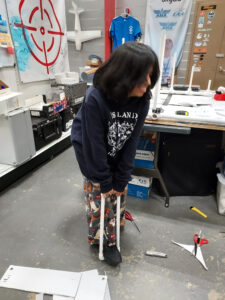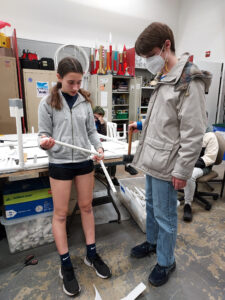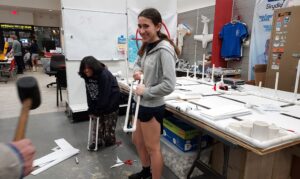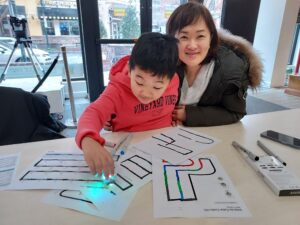 Color-Coding Robotics in Elementary STEM Scouts
Color-Coding Robotics in Elementary STEM Scouts
Specific steps. Patience. Innovation. Thanks to coding, we are able to live our lives in a more convenient and revolutionized way! Throughout this module, Scouts use color-coding robots in a variety of ways to boost their familiarity with robotics, coding, problem-solving, and design-thinking. Starting with color codes, Scouts become comfortable with the idea of inputs and outputs and will then move on to block-coding with an online programming language.
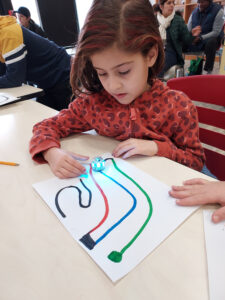
STEM Scouts also focus on integrating art into STEM by creating various designs while
also learning about real-world concepts like data collection, Venn diagrams, and blueprints. Those who code hold the world’s technological future in their hands, and the opportunities are unlimited!
Soft Robotics in Middle School
The middle schoolers’ STEM Scouts robotics module delves into an exciting and newly developing branch of robotics—soft or flexible robotic structures. When you look at an elephant’s trunk or an octopus’s arm, you can see natural examples of flexible structures used to grasp and manipulate objects. There are many tasks in our world that a rigid structure just does not perform well. Soft Robotics explores the development of flexible structures to work in these areas. In this module, Scouts will explore the concept of soft robots and learn how flexible structures move and how they can be programmed to perform useful tasks. This module was developed by the REACH Lab at the University of Tennessee, Knoxville.
High School Robotics in a STEM Exploring Post
Botball Educational Robotics requires the students to build, program, test and document two robots to autonomously complete scoring challenges. The robots are built out of kits provided by KISS Institute for Practical Robotics (KIPR). Photographed below are members of Explorer Post 1010 working with the PVC pipe as they prepare for a Botball competition.
